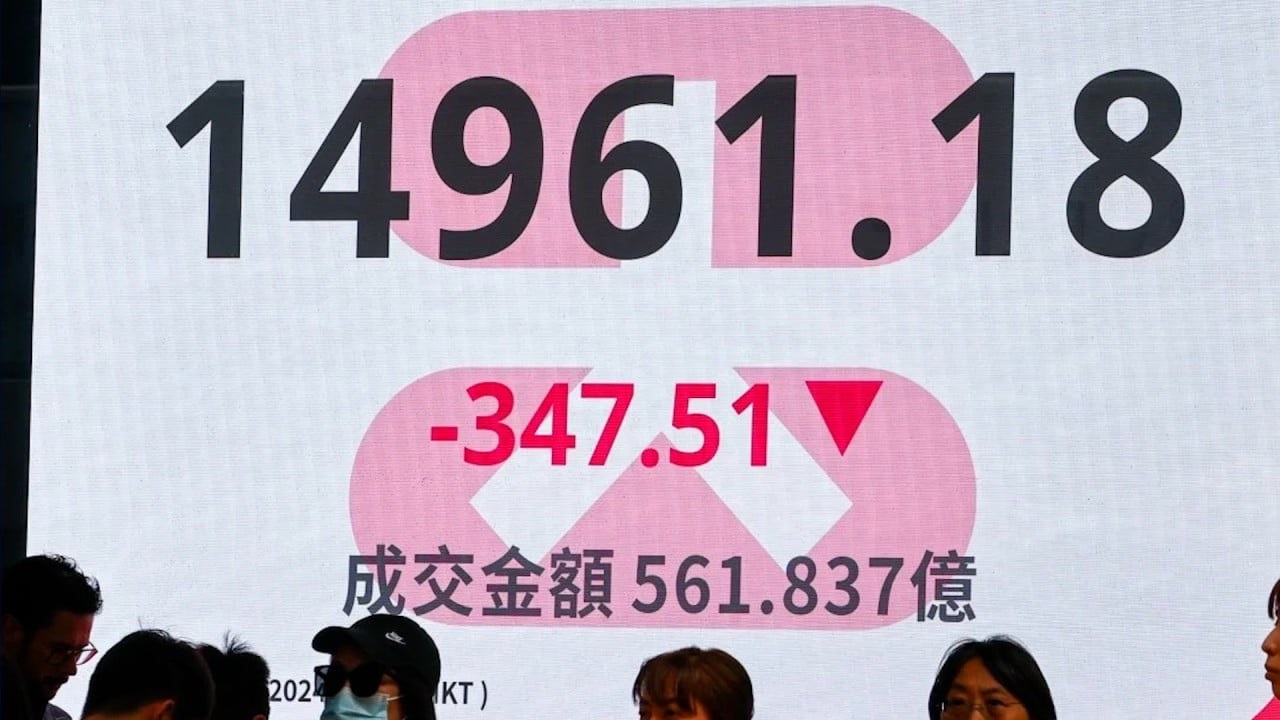
Hong Kong MPF: investors who switched to US stocks miss out on rally as fund rakes in HK$14,000 per member in best performance since 2017
- The funds earned a combined HK$66.4 billion (US$8.5 billion) as of May 21, equivalent to HK$14,000 for each of its members
- Members who shifted their allocations to US equities missed out on a dramatic rally in Hong Kong and China stock funds
The 379 MPF investment funds earned a combined HK$66.4 billion (US$8.5 billion) as of May 21, according to MPF Ratings, an independent research firm. That is equivalent to HK$14,000 for each of its members.
Not everyone will be happy about the rally. A lot of members shifted the allocation of their assets at the wrong time.
Investors who made that adjustment to their portfolios have missed out on a rally. The Hong Kong and China stock funds gained an average of 7.6 per cent this month as of May 21, having returned 5.9 per cent in April, according to MPF Ratings data. They are the best performers among all funds.
“The numbers suggest some MPF members have tried to time markets, but in doing so have been hurt by a classic ‘whipsaw’ effect,” said MPF Ratings chairman Francis Chung in a statement when he released the data on Friday morning.
“They have sold Hong Kong and China shares at a low point and bought the US market on a high in the hope the US will continue to outperform.”
Members may have been tempted by the impressive performance of the MPF’s US equity funds last year, when they delivered an average return of 24.4 per cent compared with a decline of 13.4 per cent in Hong Kong and China stocks.
“Those members who switched before April have missed out on a 10 per cent performance reversal, and given Hong Kong and China equities’ continued strength, the whipsaw effect will be even greater in May,” Chung said. “This reinforces the importance of long-term diversified investing rather than short-term market trading with retirement money.”
The Mandatory Provident Fund Schemes Authority, the regulator, echoed his word of caution.
“MPF is a long-term investment spanning over 40 years, and members should adopt a long-term investment perspective rather than a short-term investment approach in managing MPF,” a spokesman said.
“Attempting to time the market is not recommended. Switching MPF funds after a significant drop in the market may lead to a situation of ‘selling low, buying high’, turning short-term fluctuations into actual investment losses.”
Hong Kong’s benchmark Hang Seng Index has risen 15 per cent since April, while the CSI300 index, which tracks the top 300 stocks listed in Shanghai and Shenzhen, has added 4 per cent. They far outperformed the S&P 500’s 1 per cent increase and Nasdaq’s 2 per cent advance in the same period.
The market rally came after the China Securities Regulatory Commission (CSRC) announced last month that it would facilitate Hong Kong listings by leading mainland companies. The regulator also announced the expansion of the Stock Connect cross-border investment scheme to enhance the city’s status as an international financial centre.
“After difficult market situations for China and Hong Kong last year, the stock prices of both markets have become attractive, especially for quality companies,” said Kenrick Chung, director of Ben. Excellence Consultancy, an insurance broker in Hong Kong.
“With different measures taken to rescue the property market in China, the worst is believed to be over.
“Various economic indicators show that the Chinese economy is improving. However, the long-awaited rate decrease in the US has been delayed again, which makes the US market less attractive than that of China and Hong Kong.”
Established in 2000, Hong Kong’s MPF is a compulsory retirement scheme covering 4.75 million members. Employers and employees contribute to the scheme each month, and their money goes into some of its 379 investment funds. Employees can cash in their investment at the age of 65.
The MPF’s total assets had risen by 7.8 per cent to HK$1.23 trillion as of May 21 from the start of the year, after taking into account investment gains and new contributions from its members, according to MPF Ratings. That works out to about HK$258,700 per member on average.


